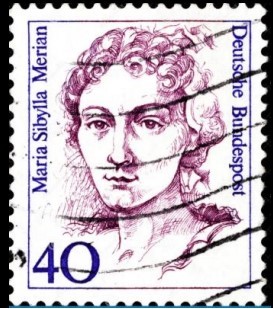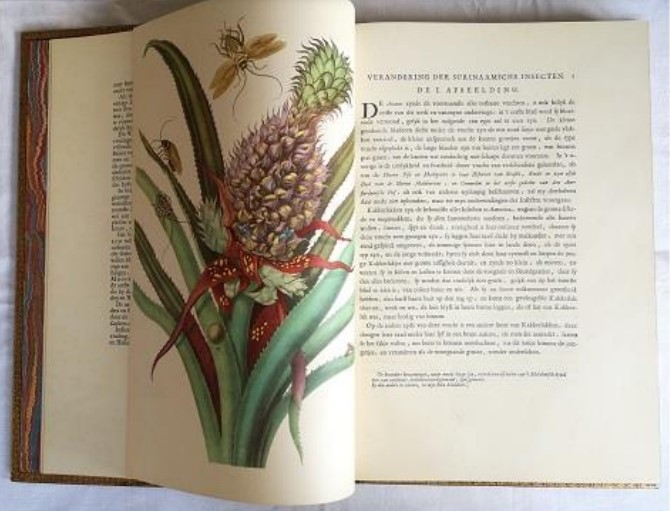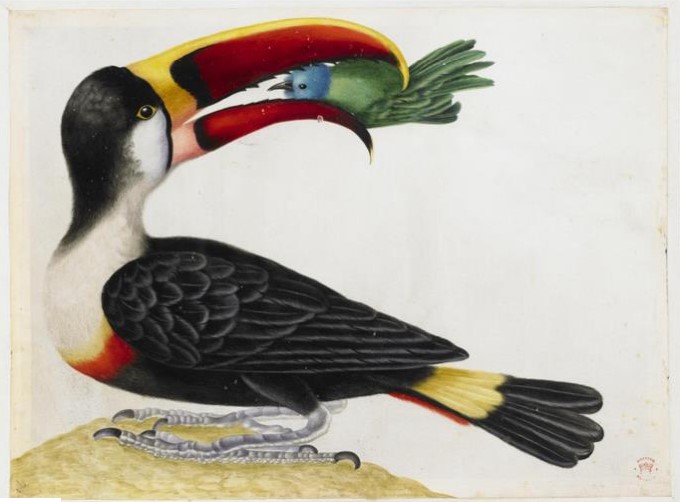s2e32 History of Prints Maria Sibylla Merian
Platemark: Prints and the Printmaking Ecosystem
Release Date: 09/17/2024
 s3e85 printing vintage semiconductors with artist Deb Puretz
s3e85 printing vintage semiconductors with artist Deb Puretz
Platemark: Prints and the Printmaking Ecosystem
In this episode of Platemark, Deb Puretz, an IT professional and artist, discusses her journey into the art world and navigating it as an outlier. Deb, originally from California and now based in South Carolina, shares her experiences of making connections, leveraging business skills, and adapting to new technologies in art. She talks about her early career in Hong Kong, the pivotal moments in her art practice, and working with semiconductors to create unique prints. Deb emphasizes the importance of connections, perseverance, and aiding fellow artists. She also touches on the evolving...
info_outline s3e84 printing in plaster with artist Jonathan Beaumont Thomas
s3e84 printing in plaster with artist Jonathan Beaumont Thomas
Platemark: Prints and the Printmaking Ecosystem
In this episode of Platemark, Ann talks with artist and teacher Jonathan Thomas who shares insights from his time at the Maryland Institute College of Art (MICA), the printmaking program he chairs, and his personal studio in Baltimore. We take a deep dive into his exploration of printing in plaster, detailing the technical process, historical context, and the challenges it presents compared to traditional intaglio printmaking. We talk about his shift from multi-plate color works to black and white, emphasizing the joy and struggle of achieving precise visual results. We talk about his...
info_outline s3e83 solarplate etching with Dan Welden
s3e83 solarplate etching with Dan Welden
Platemark: Prints and the Printmaking Ecosystem
In this episode of Platemark, Ann sits down with the legendary artist and printmaker Dan Welden. The artist is known for his pioneering work in solarplate etching, a revolutionary, chemical-free printmaking process. Welden recounts his experiences and collaborations with significant artists like Eric Fischl and Elaine and Willem de Kooning. He also delves into his personal creative struggles, preferences for classical music, and tales of his distinctive handmade house filled with artist tiles and unique craftsmanship. The episode is a compelling insight into Welden's artistic journey...
info_outline s3e82 topology- and philosophy-imbued domestic scenes with Ellen Heck
s3e82 topology- and philosophy-imbued domestic scenes with Ellen Heck
Platemark: Prints and the Printmaking Ecosystem
In this episode of Platemark, I talk with Ellen Heck about her artistic journey and work. We talk about the intricacies of printmaking techniques, Ellen's various portrait series, and the conceptual ideas behind her work. Ellen shares her journey from studying philosophy at Brown, to printmaking at the School of the Art Institute of Chicago, and finally working at the Kala Art Institute in Berkeley. They also explore topics like the influence of Mary Cassatt, the use of color wheels in organizing compositions, and Ellen's fascination with topology in her artwork. Our insightful conversation...
info_outline s3e81 building and fixing presses with Mike Stark
s3e81 building and fixing presses with Mike Stark
Platemark: Prints and the Printmaking Ecosystem
In this episode of the Platemark, I interview Mike Stark, the co-founder and owner of Stark Press Company. The New Jersey-based company, run by Mike and his brother Tom, builds new presses, services old presses, and aids in moving them. They often collaborate with Perry Tymeson, a legendary press repairman. Mike shares insights into designing new presses, managing a small business, and balancing creative work. We talk about studying print media at SAIC in Chicago and establishing Stark Press. We talk about his experiences in moving heavy presses, sometimes in challenging conditions, and the...
info_outline s3e80 melding printing and publishing with curatorial work with Mae Shore
s3e80 melding printing and publishing with curatorial work with Mae Shore
Platemark: Prints and the Printmaking Ecosystem
In this episode of Platemark, I talk with Mae Shore, a collaborative printer and owner of Shore Publishing in Tuxedo Park, New York. Mae shares her experiences working at Pace Editions with notable artists like Jim Dine and Chuck Close. She discusses the history and evolution of her gallery and print shop, which she established to merge her love for printmaking and curating exhibitions. Mae touches upon specific projects, such as her collaborations with artists like Amy Bennett, Kamrooz Aram, and Katia Santibañez and James Siena, detailing the unique processes and challenges in creating...
info_outline s3e79 contemporary Japanese prints with Michael Verne
s3e79 contemporary Japanese prints with Michael Verne
Platemark: Prints and the Printmaking Ecosystem
In this episode of Platemark, I talk with Michael Verne, the owner of the Verne Collection in Cleveland, Ohio. Mike's gallery specializes in contemporary Japanese art and works by American artists residing in Japan. We talk about the challenges and rewards of running a small gallery amid larger competitors, and the importance of finding and promoting new artists. Mike shares insights about his journey in the art world, from his childhood surrounded by art to becoming a successful gallerist without a formal art education. He recounts various personal anecdotes, including his experiences at art...
info_outline s3e78 electronic arts in printmaking with Myles Calvert
s3e78 electronic arts in printmaking with Myles Calvert
Platemark: Prints and the Printmaking Ecosystem
In this episode of Platemark, Myles Calvert, a printmaker and professor, shares his extensive journey from growing up in Ontario, Canada, to studying and working in the UK, and eventually returning to Alfred University in New York, to become director of the Institute of Electronic Arts. Myles discusses his experiences working at prestigious galleries in London, giving up a tenure-track position, and the pivotal moments that shaped his career. He delves into his role as the Director of IEA at Alfred, including the intricacies of managing residencies, the use of technology in printmaking, and...
info_outline s3e77 documenting the printmaking ecosystem with Susan Goldman
s3e77 documenting the printmaking ecosystem with Susan Goldman
Platemark: Prints and the Printmaking Ecosystem
In this interview with the director and founder of Lily Press and the Printmaking Legacy Project, Susan Goldman shares her passion for printmaking and documentary film making. Susan discusses her journey from discovering printmaking at Indiana University, Bloomington, to founding Lily Press and creating impactful documentaries like Midwest Matrix. She highlights her educational experiences, mentors, and the vibrant printmaking community she's built over time. Goldman also delves into her personal work, her love for screenprinting, and the balance of managing a studio while collaborating with...
info_outline s3e76 the print studio as sanctuary with Bryan Raymundo
s3e76 the print studio as sanctuary with Bryan Raymundo
Platemark: Prints and the Printmaking Ecosystem
In this episode, Ann talks with Bryan Raymundo, owner of the Black Fragment Press. They discuss their meeting at the Mid America Print Council conference and Bryan’s background, from growing up in Mexico and Kansas to his love for Black Sabbath and printmaking. Bryan reveals his journey into art, inspired by comforting his sick grandmother with drawings, and his challenges in balancing his family’s immigrant expectations with his artistic aspirations. They delve deeply into his evolving art practice, the importance of mentors like Marco Hernandez and Jason Scuilla, and his passion for...
info_outlineIn this History of Prints episode of Platemark, host Ann Shafer and subject matter expert Tru Ludwig explore the extraordinary life and legacy of Maria Sibylla Merian. Celebrated for her pioneering work on insect metamorphosis and her detailed illustrations of flora and fauna, Merian's journey took her to Suriname where she documented local species with the help of native people and slaves. Despite the societal constraints of the 17th century, she made significant contributions to both science and art, influencing future generations. The discussion also situates her achievements within the broader context of the Enlightenment and printmaking evolution, drawing comparisons with other naturalists like Audubon. The episode concludes with a teaser for an upcoming feature on William Hogarth, noted for his political satire.
George Peabody Library, Baltimore, MD.
Johann Zoffany (German, 1733–1810). The Academicians of the Royal Academy, 1771–72. Oil on canvas. 101.1 x 147.5 cm. Royal Collection Trust.
Maria Sibylla Merian (Dutch, 1647–1717) on the 500 Deutsche Mark.
Maria Sibylla Merian (Dutch, 1647–1717) on a German postage stamp.
Jacob Marrel (German, 1613–1681). Portrait of Maria Sibylla Merian, 1679. Oil on canvas. 59 x 50.5 cm. Kunstmuseum Basel.
[DETAIL] Joachim von Sandrart I (German, 1606–1688) and Philipp Kilian (German, 1628–1693). Detail of Portraits of Michel le Blond, Aegidius Sadeler, Georg Petele, Matthaus Merian, Renbrant a Rhen, Carol Screta, c. 1683. Engraving. Plate: 12 1/4 × 7 7/8 in. (31.1 × 20 cm.); sheet: 12 3/4 × 8 3/8 in. (32.4 × 21.3 cm.). Detroit Institute of Arts, Detroit.
Wenceslaus Hollar (Flemish, 1607–1677). Muff with a band of brocade, 1647. Etching. Plate: 11.3 x 8.3 cm. Museum of New Zealand Te Papa Tongarewa, Wellington, New Zealand.
Matthäus Merian (Swiss, 1593–1650). Todten-Tantz Wie derselbe in der Weitberümbten Statt Basel als ein Spiegel Menschlicher beschaffenheit gantz Künstlich mit Lebendigen Farben Gemahlet, nicht ohne nutzliche Verwunderung zusehen ist. Basel: Mieg, 1621. Thüringer Landesmuseum Heidecksburg.
Jacob Marrel (German, 1613–1681). Four Tulips: (Boterman, Joncker, Grote geplumaceerde, and Voorwint), c. 1635–45. Watercolor on vellum. 13 3/8 x 17 11/16 in. Metropolitan Museum of Art, New York.
Rachel Ruysch (Dutch, 1664–1750). Festoon with Flowers and Fruit, 1682. Oil on canvas. 38 x 33 cm. National Gallery of Prague.
Maria Sibylla Merian (Dutch, 1647–1717 ). Plate 5 from volume 1 of Der Raupen wunderbare Verwandlung und sonderbare Blumennahrung (The Caterpillars' Marvelous Transformation and Strange Floral Food). Germany: self-published, 1679.
Jan Goedaert (German, 1617–1668). Study for and engraving of metamorphosis of a moth.
Tru Ludwig (American, born 1959). Dumb Luck, 2009. Two-plate etching, printed à la poupée. Plate: 37 ½ x 27 in.; sheet (42 x 30 in.). Courtesy of the Artist.
Jacobus Houbraken (Dutch, 1698–1780), after Georg Gsell (Swiss, 1673–1740). Portrait of Maria Sibylla Merian. Engraving with hand coloring, frontispiece in Der Rupsen Begin, Voedzel en Wonderbaare Verandering. Waar in De Oorspronk, Spys en Gestaltverwisseling; als ook de Tyd, Plaats en Eigenschappen de Rupsen, Wormen, Kapellen, Uiltjes, Vliegen, en andere diergelyke bloedelooze Beesjes vertoond word. Amsterdam: self-published, 1717.
Maria Sibylla Merian (Dutch, 1647–1717). Neues Blumenbuch. Nuremberg: self-published, 1680.
Maria Sibylla Merian (Dutch, 1647–1717). Blumenbuch. Nuremberg: Johann Andreas Graff, 1675.
Maria Sibylla Merian (Dutch, 1647–1717). Illustration of a Turk's cap lily (Lilium superbum) from Merian's New Book of Flowers, 1680.
Maria Sibylla Merian (Dutch, 1647–1717). Titlepage from Der Raupen wunderbare Verwandlung und sonderbare Blumennahrung (The Caterpillars' Marvelous Transformation and Strange Floral Food). Germany: self-published, 1679.
Jim Dine (American, born 1935). The Temple of Flora, 1984. San Francisco, Arion Press, 1984.
Maria Sibylla Merian (Dutch, 1647–1717). A Pineapple Surrounded by Cockroaches, c. 1701–05. Watercolor and gouache on vellum. British Museum, London.
Maria Sibylla Merian (Dutch, 1647–1717). Merian's 'forest rat' or opossum (Didelphimorphia) carrying her young. Detail from plate 66 of Metamorphosis Insectorum Surinamensium. Amsterdam: self-published, 1705.
Maria Sibylla Merian (Dutch, 1647–1717). Plate (frog) from Metamorphosis Insectorum Surinamensium. Amsterdam: self-published, 1705.
Maria Sibylla Merian (Dutch, 1647–1717). Metamorphosis Insectorum Surinamensium ofte Verandering der Surinaamsche Insecten. Amsterdam: self-published, 1705.
Maria Sibylla Merian (Dutch, 1647–1717). Ripe Pineapple with Dido Longwing Butterfly, 1702–03. Watercolor and gouache with gum arabic over lightly etched outlines on vellum. 43.5 x 28.8 cm. Royal Collection Trust, London.
Maria Sibylla Merian (Dutch, 1647–1717). Ripe Pineapple with Dido Longwing Butterfly, from the book, Metamorphosis Insectorum Surinamensis. Amsterdam: Johannes Oosterwyk, 1718.
Maria Sibylla Merian (Dutch, 1647–1717). Plate (praying mantes) from Metamorphosis Insectorum Surinamensium. Amsterdam: self-published, 1705.
Maria Sibylla Merian (Dutch, 1647–1717). Plate (snake) from Metamorphosis Insectorum Surinamensium. Amsterdam: self-published, 1705.
Maria Sibylla Merian (Dutch, 1647–1717). Plate (tarantula) from Metamorphosis Insectorum Surinamensium. Amsterdam: self-published, 1705.
[DETAIL] Maria Sibylla Merian (Dutch, 1647–1717). Plate (tarantula) from Metamorphosis Insectorum Surinamensium. Amsterdam: self-published, 1705.
Maria Sibylla Merian (Dutch, 1647–1717). Plate (tarantula) from Metamorphosis Insectorum Surinamensium. Amsterdam: self-published, 1705.
Maria Sibylla Merian (Dutch, 1647–1717). Plate (croc eating snake) from Metamorphosis Insectorum Surinamensium. Amsterdam: self-published, 1705.
Maria Sibylla Merian (Dutch, 1647–1717). Plate (pineapple and cockroaches) from Metamorphosis Insectorum Surinamensium. Amsterdam: self-published, 1705.
Maria Sibylla Merian (Dutch, 1647–1717). Watercolor study of Toucan for Metamorphosis Insectorum Surinamensium ofte Verandering der Surinaamsche Insecten. Amsterdam: self-published, 1705.
Maria Sibylla Merian (Dutch, 1647–1717). Plate (black tegu) from Metamorphosis Insectorum Surinamensium. Amsterdam: self-published, 1705.
Jacobus Houbraken (Dutch, 1698–1780), after Georg Gsell (Swiss, 1673–1740). Portrait of Maria Sibylla Merian. Engraving, frontispiece in Der Rupsen Begin, Voedzel en Wonderbaare Verandering. Waar in De Oorspronk, Spys en Gestaltverwisseling; als ook de Tyd, Plaats en Eigenschappen de Rupsen, Wormen, Kapellen, Uiltjes, Vliegen, en andere diergelyke bloedelooze Beesjes vertoond word. Amsterdam: self-published, 1717.
Thomas Bewick (British, 1753–1828). Title page from History of British Birds. Newcastle: Beilby & Bewick, 1797.
Thomas Bewick (British, 1753–1828). Title page from The Supplement to the History of British Birds. London: Longman and Co., 1821.
Dr. Robert Thorton (British). Flowering Cereus from The Temple of Flora, 1807. Color mezzotint. London: self-published, 1812.
John James Audobon (French-American, 1785–1851). Flamingo fron The Birds of America. London: self-published, 1827–38.
John James Audobon (French-American, 1785–1851). Carolina Parakeets from The Birds of America. London: self-published, 1827–38.
John James Audobon (French-American, 1785–1851). Hawks eating dinner from The Birds of America. London: self-published, 1827–38.









































